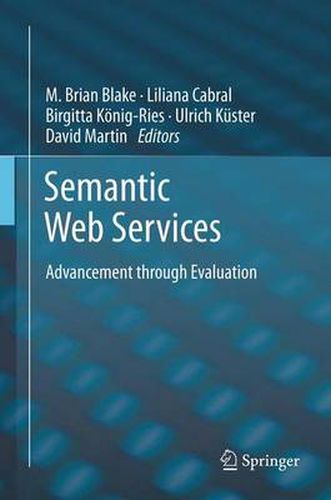Readings Newsletter
Become a Readings Member to make your shopping experience even easier.
Sign in or sign up for free!
You’re not far away from qualifying for FREE standard shipping within Australia
You’ve qualified for FREE standard shipping within Australia
The cart is loading…






This title is printed to order. This book may have been self-published. If so, we cannot guarantee the quality of the content. In the main most books will have gone through the editing process however some may not. We therefore suggest that you be aware of this before ordering this book. If in doubt check either the author or publisher’s details as we are unable to accept any returns unless they are faulty. Please contact us if you have any questions.
Over the last decade, a great amount of effort and resources have been invested in the development of Semantic Web Service (SWS) frameworks. Numerous description languages, frameworks, tools, and matchmaking and composition algorithms have been proposed. Nevertheless, when faced with a real-world problem, it is still very hard to decide which of these different approaches to use.
In this book, the editors present an overall overview and comparison of the main current evaluation initiatives for SWS. The presentation is divided into four parts, each referring to one of the evaluation initiatives. Part I covers the long-established first two tracks of the Semantic Service Selection (S3) Contest - the OWL-S matchmaker evaluation and the SAWSDL matchmaker evaluation. Part II introduces the new S3 Jena Geography Dataset (JGD) cross evaluation contest. Part III presents the Semantic Web Service Challenge. Lastly, Part IV reports on the semantic aspects of the Web Service Challenge. The introduction to each part provides an overview of the evaluation initiative and overall results for its latest evaluation workshops. The following chapters in each part, written by the participants, detail their approaches, solutions and lessons learned.
This book is aimed at two different types of readers. Researchers on SWS technology receive an overview of existing approaches in SWS with a particular focus on evaluation approaches; potential users of SWS technologies receive a comprehensive summary of the respective strengths and weaknesses of current systems and thus guidance on factors that play a role in evaluation.
$9.00 standard shipping within Australia
FREE standard shipping within Australia for orders over $100.00
Express & International shipping calculated at checkout
This title is printed to order. This book may have been self-published. If so, we cannot guarantee the quality of the content. In the main most books will have gone through the editing process however some may not. We therefore suggest that you be aware of this before ordering this book. If in doubt check either the author or publisher’s details as we are unable to accept any returns unless they are faulty. Please contact us if you have any questions.
Over the last decade, a great amount of effort and resources have been invested in the development of Semantic Web Service (SWS) frameworks. Numerous description languages, frameworks, tools, and matchmaking and composition algorithms have been proposed. Nevertheless, when faced with a real-world problem, it is still very hard to decide which of these different approaches to use.
In this book, the editors present an overall overview and comparison of the main current evaluation initiatives for SWS. The presentation is divided into four parts, each referring to one of the evaluation initiatives. Part I covers the long-established first two tracks of the Semantic Service Selection (S3) Contest - the OWL-S matchmaker evaluation and the SAWSDL matchmaker evaluation. Part II introduces the new S3 Jena Geography Dataset (JGD) cross evaluation contest. Part III presents the Semantic Web Service Challenge. Lastly, Part IV reports on the semantic aspects of the Web Service Challenge. The introduction to each part provides an overview of the evaluation initiative and overall results for its latest evaluation workshops. The following chapters in each part, written by the participants, detail their approaches, solutions and lessons learned.
This book is aimed at two different types of readers. Researchers on SWS technology receive an overview of existing approaches in SWS with a particular focus on evaluation approaches; potential users of SWS technologies receive a comprehensive summary of the respective strengths and weaknesses of current systems and thus guidance on factors that play a role in evaluation.